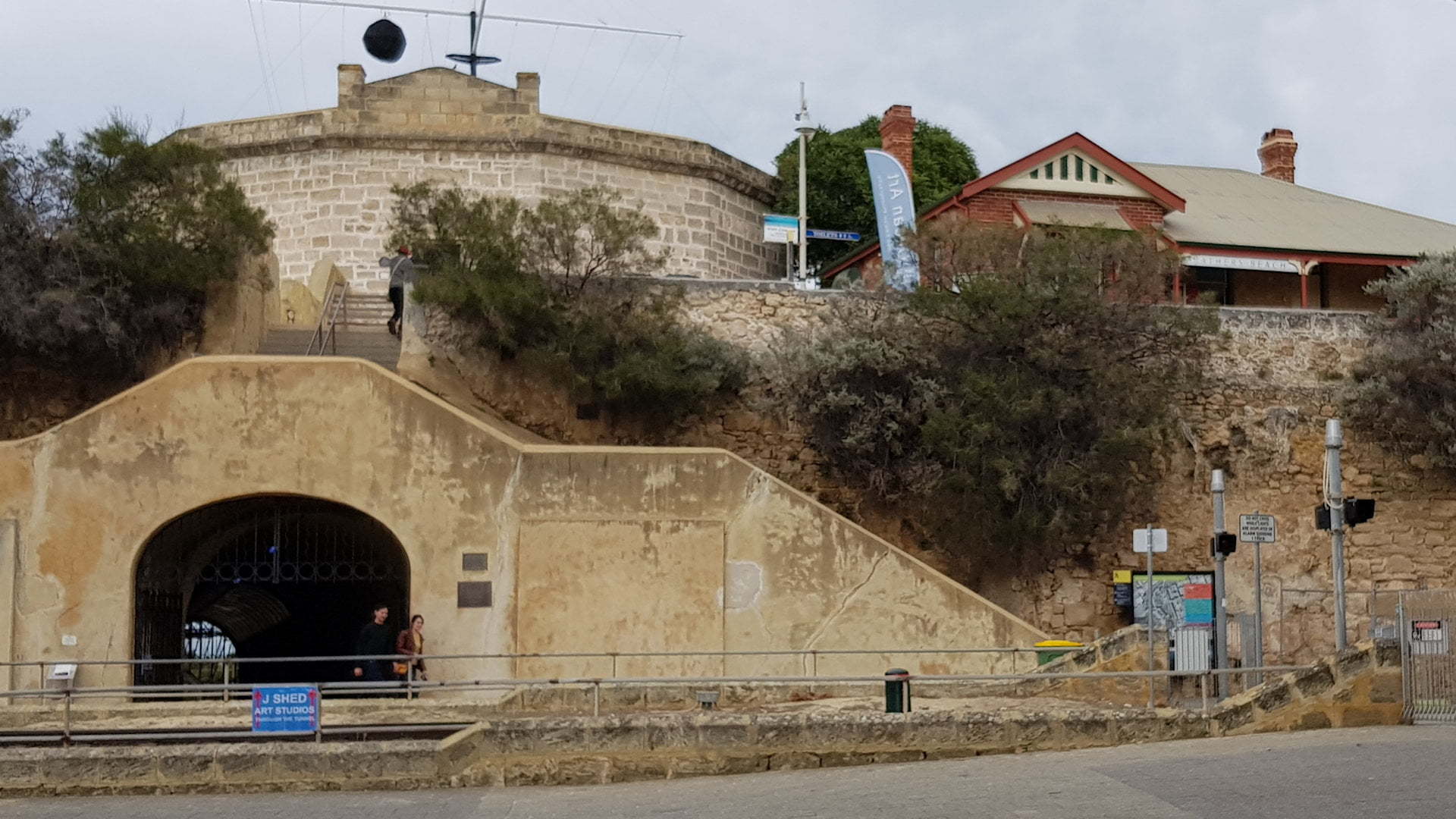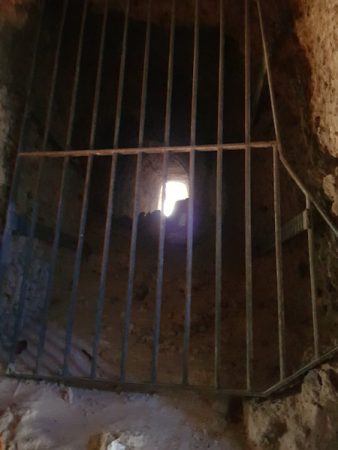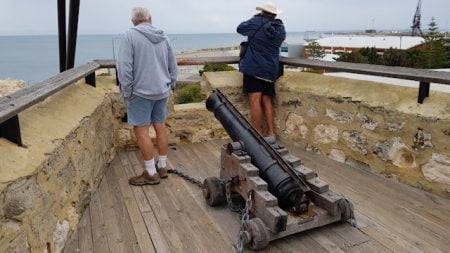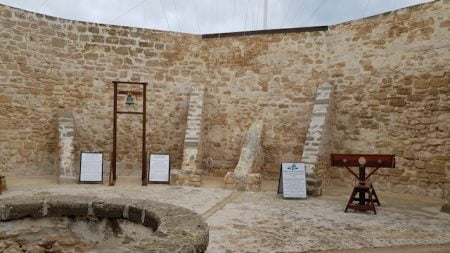
The Round House is one of several buildings on what was called Gaol Hill. The Roundhouse is the oldest public building in Western Australia, the first permanent building opening in 1831 only 18 months after the settlement.
Beneath the Round House is a tunnel that was constructed to link the Bathers Beach whaling station to High Street, the first underground engineering project in Western Australia. The 64-metre tunnel was constructed quickly in 1838, utilising labour from the prisoners and the rock was easily mined with a pick axe.
The tunnel is shorter after some of the cliffs were cut back shortened the tunnel by nearly 20 metres. The limestone quarried from the cliffs was used to build the whaling station jetty.

The tunnel was used as an air raid shelter during World War II. A smaller ‘Secret Tunnel’ was constructed in 1938 to provide quick access from the Gunner’s Cottage above to the Whalers’ Tunnel.
The steps and tunnel entrance seen in the main photo is from High Street or Captains Lane. The steps below the landing form part of the steps constructed n 1838 and designed to accommodate the tunnel built below it.
The steps originally turned and came outward from the Roundhouse, where the square sections can be seen in the walls beside the tunnel. The steps were altered in 1966 to allow for new standard gauge railway track to be build along it.
Inside the Round House is decorated with some items to give an idea of what it may have been like. You can have a go at being in the public stocks or attached to a ball and chain. The stocks were introduced in 1933 by request of three magistrates. It was hoped that a degrading public exposure of offenders, it would reduce drunkenness and disorderly conduct that was prevalent in the colony.
A curfew bell was rung each night at 9.50pm to warning convicts on parole they were to be at their lodgings by 10pm. If they were apprehended after 10pm, they would spend the night locked up in the Roundhouse. The original bell is now in a church in Dongara (the town where the Big Rock Lobster is).

At end on top of the cliffs is a cannon which is fired each day at 1pm. From the top of the cliffs is a great view over the ocean and across to Rottnest Island.
The Roundhouse had 8 cells and a jailer’s residence that opened into a central courtyard. The design is based on a panopticon, a type of institutional building where inmates are not able to know if they are being watched so they tend to self-regulate their behaviour. Panopticon is derived from panoptes, the Greek word for ‘all seeing’.
The Roundhouse spent most of its time holding people convicted of a crime for over 50 years until 1886, when the Fremantle Prison ![]() was transferred to the colony (then called the Convict Establishment Prison). It was then used as a Police lockup for a few years before being used for accommodation for the Water Police and storage for Fremantle Ports.
was transferred to the colony (then called the Convict Establishment Prison). It was then used as a Police lockup for a few years before being used for accommodation for the Water Police and storage for Fremantle Ports.

Throughout the years Gaol Hill held the two courthouses, the Round House, the first lighthouse, and a flagstaff, and on the lower level a Police Station complex.
The Roundhouse was to be demolished at times but was saved. For a while, the Fremantle Ports opened the building to the public for two hours per day, run by a historical society. In the 1980s, Fremantle City Council took over responsibility and it is now open with entry by donation.
Fremantle was a major campsite and trading place for Aboriginals because of the good supplies of fresh water and food. The area was called Majaree, derived from the Nyangar word mandjar, meaning a place where goods were traded.
Bathers Bay was known by Aboriginals as a whale trap because whales frequently get beached there. Aboriginal people would come to feast on ‘mimang’, their word for whale.
It became something very different for them with European settlement. The Roundhouse was used to hold Aboriginal prisoners between 1839 and 1903 before being sent to Rottnest Island to serve out their sentences.

From Perth head east on Stirling Hwy, later veering to the right towards Fremantle on Queen Victoria St. Follow Queen Victoria St across the bridge over Swan River. At the lights, turn right to continue on Queen Victoria St 500m, then turn right into James St. At the end of James St, turn left onto Beach St and follow for 1.3km, becoming Phillimore St. Either go straight ahead for parking, with the Roundhouse to the left, or turn left into Cliff St and first right into High St to arrive at the tunnel of the Round House.
Heading west on Canning Hwy, follow towards Fremantle. Passing the shipping container rainbox (Rainbox Sea Container), continue for another 700m and turn right into James St. At the end of James St, turn left onto Beach St and follow for 1.3km, becoming Phillimore St. Either go straight ahead for parking, with the Roundhouse to the left, or turn left into Cliff St and first right into High St to arrive at the tunnel of the Round House.


